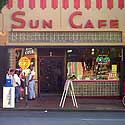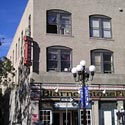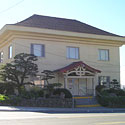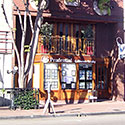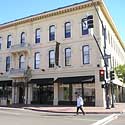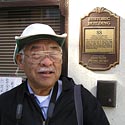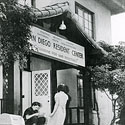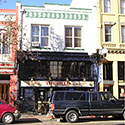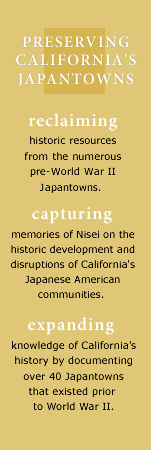 |
San DiegoNikkei began to settle in San Diego in the late 1880s, and built a community with economic foundations in vegetable farming, small businesses and fishing. Japanese American residents of San Diego numbered over 1,500 at the onset of WWII. By about 1920, Japanese Americans dominated the local tuna fishing industry, which led non-Nikkei to copy techniques imported from Japan at the same time competitors worked to restrict fishing licenses for Japanese immigrants. Services for San Diego Nikkei and those in outlying areas were concentrated in several blocks around the main intersection of Fifth and Island. The commercial heart of San Diego’s Nihonmachi overlaps with its historic Chinatown, and with the contemporary "Gaslamp District," a popular destination for tourism and nightlife. ›› CLICK TO ENLARGE.
PROFILES
| ||||

Built ca. 1880, this structure housed the Obayashi family's shooting gallery and confectionary shop in the early 1900s. One of the first Japanese restaurants in San Diego, the Sun Café has stood at 421 Market Street since 1926.

In 1941, this building at the corner of 5th Avenue and Market Street held the Ginza Beauty Salon, Ohori Sewing School and Saito Photography Studio along with other non-Nikkei businesses.

The Pacific Hotel at 5th and Island housed the Marusan restaurant and the dental offices of Dr. Takeo. Nippon Shokai took up most of the first floor - the largest general merchandise store selling Japanese goods south of Los Angeles. The offices of San Diego County's Japanese Association were based here as well. Local branches of the Japanese Association were formed by Issei to counter the anti-Japanese movement and perform some functions for the Japanese consulate.

Vernon Yoshioka of the Japanese American Historical Society of San Diego stands before a plaque placed by San Diego's Asian Pacific Historic District at the Chinese Benevolent Association building.

In 1926, San Diego County's first Buddhist church began in rented space in the upper floor of a building downtown. This structure one-and-a-half miles to the east was dedicated in 1931 and is still in active use at 2929 Market Street.

During WWII, the temple served as storage for the belongings of some of its members. The property was leased by the USO and by the National Youth Association, which erected barracks in the temple's parking lot to house defense workers who flooded in to find jobs in San Diego's new aircraft industry. Photo courtesy of USC Regional History Collection.

Built in 1869, this structure housed a series of Nikkei businesses beginning in 1909. Primarily used as a pool hall. a 1940 directory also lists the Star Meshiya Restaurant at the address. The Yamada family were the proprietors from 1924 to 1960, except for 1942-48 due to WWII internment.

The ABC Restaurant was one of more then thirty-five Nikkei owned businesses within a two block area. Whites and Filipinos also ran shops in the area widely known as the Japanese business district. Small businesses shops, shoe stores, American- and Japanese-style restaurants, pool halls, hotels served locals as well as Nikkei farmers from outside San Diego.
